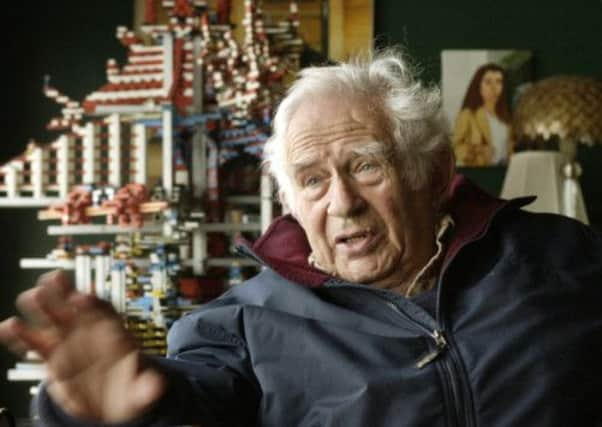Book review: Norman Mailer: A Double Life


Norman Mailer was a man and a writer halfway between fame and infamy and yet with little in the way of middle ground. He was, in varying combinations, a world-class drinker, feuder, provocateur, self-mythologiser and anti-feminist. He was a war protester, a mayoral candidate, a co-founder of the Village Voice, as well as a wife stabber, a serial husband (of six wives), and a father (of nine). He was a boxer, an actor, a filmmaker, a poet and a playwright. He was also a journalist and a novelist of enormous and singular narrative inventiveness and thrust, a two-time Pulitzer Prize winner, and one of the least boring and most tireless and tiresome public figures of the last half of the 20th century.
A veritable industry has burnished Mailer’s legend and continues to carry it forward. No fewer than 15 biographies and remembrances, by admirers, literary historians, wives and a mistress, have been published since 1969. My rough calculation puts the total number of book pages already devoted exclusively to Mailer at more than 5,000.
Advertisement
Hide AdAdding another 900 is J. Michael Lennon’s sweeping full-scale biography. It is a mighty undertaking befitting Mailer’s lifetime of protean output, which began in his twenties and continued through to his death in 2007. Despite being his subject’s literary executor, he has not sanded the corners of a career and life, each of which has plenty of texture and lots of sharp edges.
Born in 1923, Mailer was shipped off to Harvard at 16. He read voraciously, especially Hemingway, Fitzgerald, Dos Passos and Henry Miller – and, in a way, his life and career became a meld of all four.
His first novel, The Naked and the Dead (1948) a brutal, naturalistic depiction of a single platoon in the South Pacific, with enough details about the sex lives of GIs to bring a blush to the cheeks of not only Masters and Johnson, but a Kardashian or two. It landed on the best-seller list and stayed there for more than a year. He was just 25.
Mailer published continuously, but only rarely did he get the critical and commercial approval he experienced with The Naked and the Dead, which some reports say is still his best-selling book. He wrote constantly, though, and expansively, not only about the Kennedy campaign but also about moon shots, Marilyn Monroe, Lee Harvey Oswald, Vietnam, the battle of the sexes, the 1968 Democratic convention in Chicago and, later, the CIA, Picasso, Hitler and God.
When Mailer’s finger left the pulse of the zeitgeist – which it often did –it more often than not settled on the third rail of intellectual discourse: sexual politics. In 1959 he delivered this sweeping assessment of books written by women: “At the risk of making a dozen devoted enemies for life,” he said, “the sniffs I get from the ink of the women are always fey, old-hat, Quaintsy Goysy, tiny, too dykily psychotic, crippled, creepish, fashionable, frigid, outer-Baroque, maqueillé in mannequin’s whimsy, or else bright and stillborn.” He wasn’t done. Sticking his other hand into the wood chipper, he ended by saying that “a good novelist can do without everything but the remnant of his balls.”
As feminism became the law of the land, Mailer seemed to relish his outlaw status. As with much of his public baiting, he pushed boundaries largely for effect. When he suggested that women “should be kept in cages,” his last wife, Norris Church said, “you couldn’t see the twinkle in his eye ... Norman was not against equal rights. He just liked to be funny and ironic.”
Advertisement
Hide AdIn 1980, The Executioner’s Song, his reported but novelised saga of the life and death of the killer Gary Gilmore, won him his second Pulitzer Prize. He spent a decade working on Ancient Evenings, which became a best seller. But by the mid-1980s the whole idea of what the American writer should be had changed. The brawling, boozing, womanising train wreck that had characterised so many postwar writers had gone out of style, replaced by weedy, thin-haired minimalists who had learned their craft at writers’ colonies and lived in college towns teaching creative writing. Mailer’s bravura brand of life consumption was passé. What with feminism, gay rights and all the other incursions into the world Mailer wanted to surround himself with, Lennon says he lost his intellectual and political footing, even drifting towards the Right.
There is a touching scene in Lennon’s biography involving From Here to Eternity author James Jones. At a party, he met his daughter Kaylie. He told her: “I loved your father. He was the best friend I ever had, and I’ve missed him every day of my life.” Mailer recounted his last meeting with him some 20 years earlier. Jones was sitting alone at the bar. Mailer came in and challenged him to step outside for a fistfight. Women won’t understand this, nor will most men, but fisticuffs were, says Lennon, Mailer’s way of “cementing a friendship.” Jones said simply: “I can’t, Norman, I’m sick. I’ve got a bum heart.” To the end of his life, Mailer regretted the challenge and the way it overshadowed his last moments with his friend.
Advertisement
Hide AdIn his review of Peter Manso’s 1985 oral biography of Mailer, Anthony Burgess said that inasmuch as the subject was still alive, the book was “no more than a kind of interim report. The subject of a life should sit still, or lie still.” Now that Mailer is finally still, Lennon’s glorious biography is the first of what one can only assume will be many final reports to come.